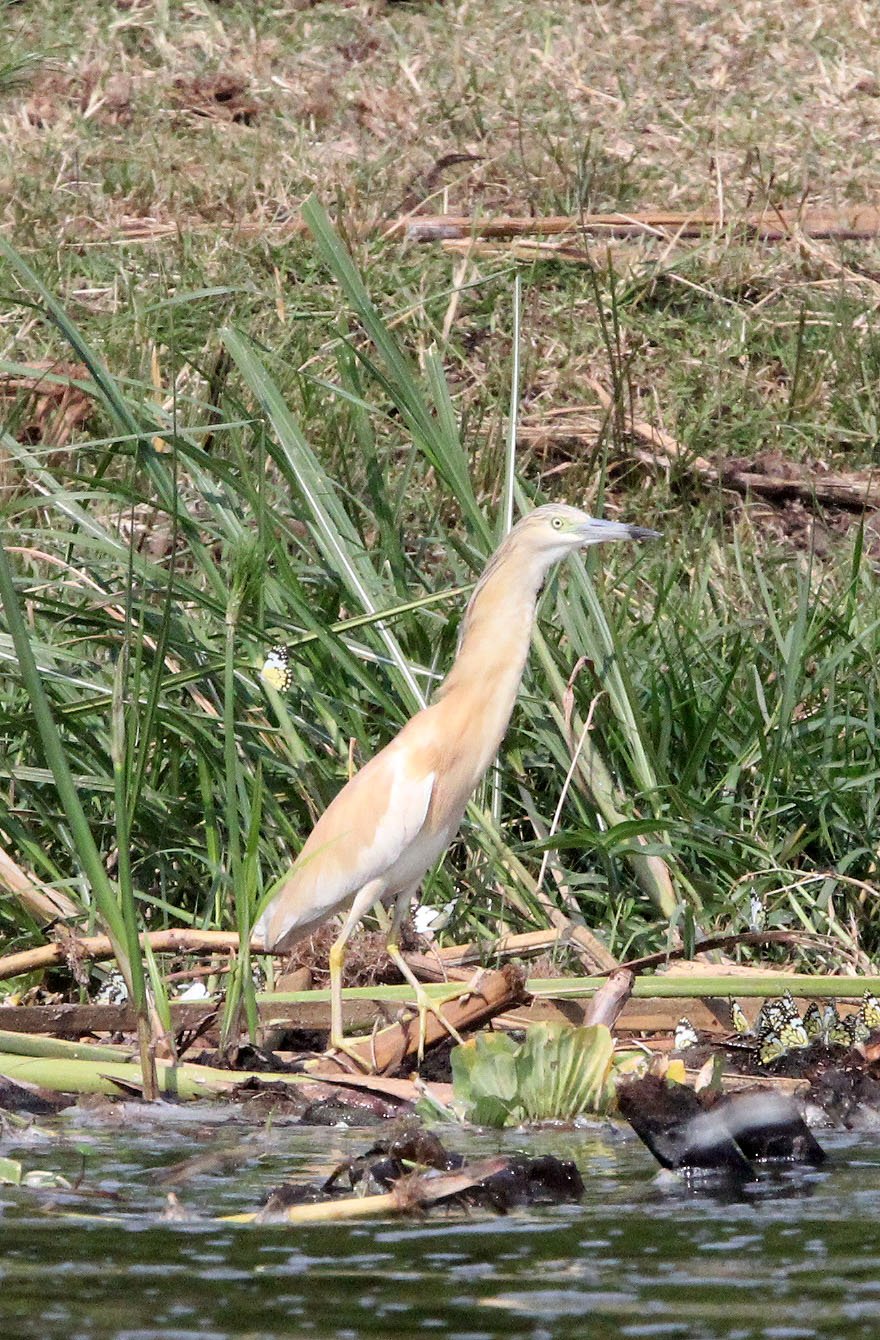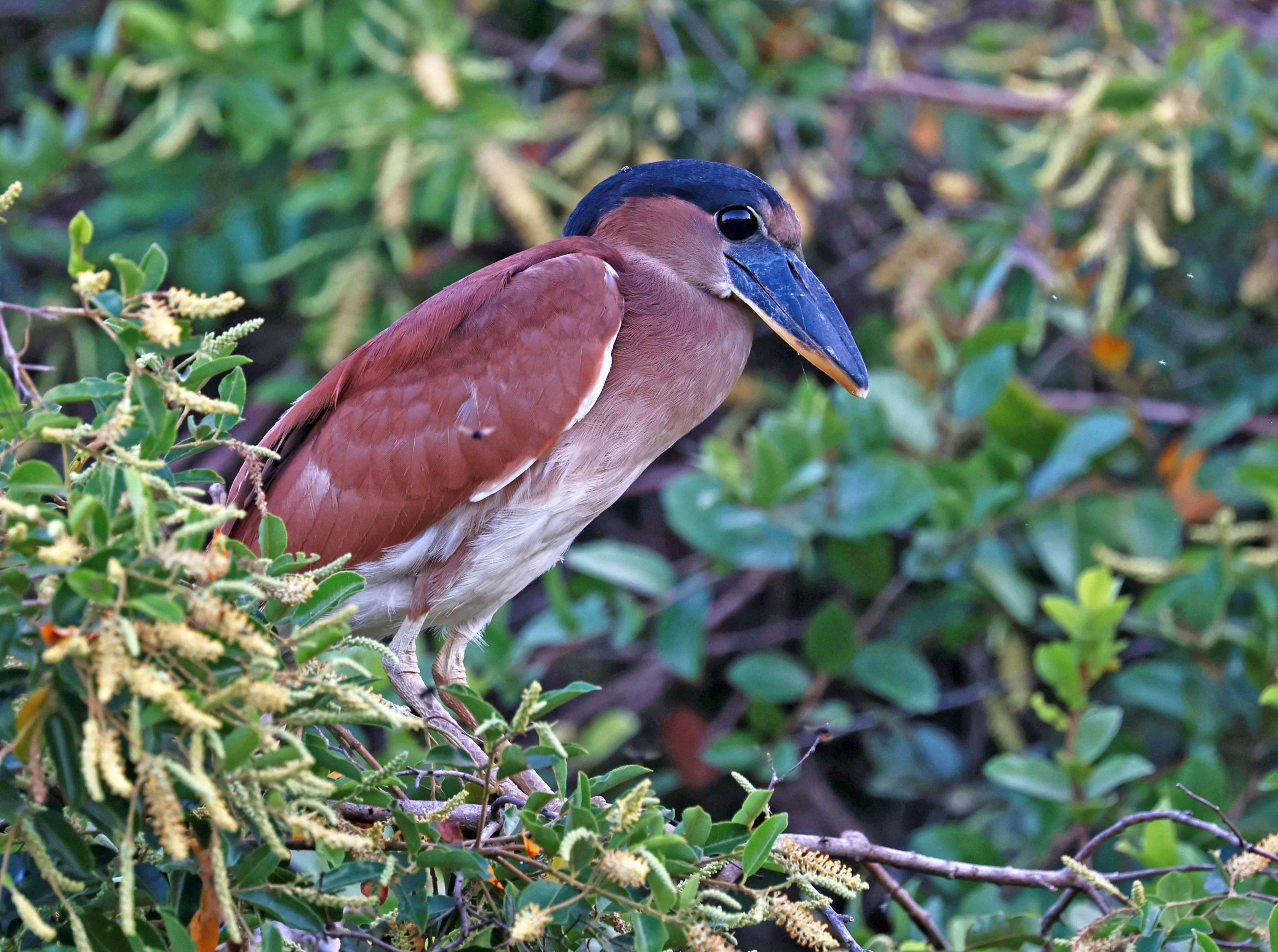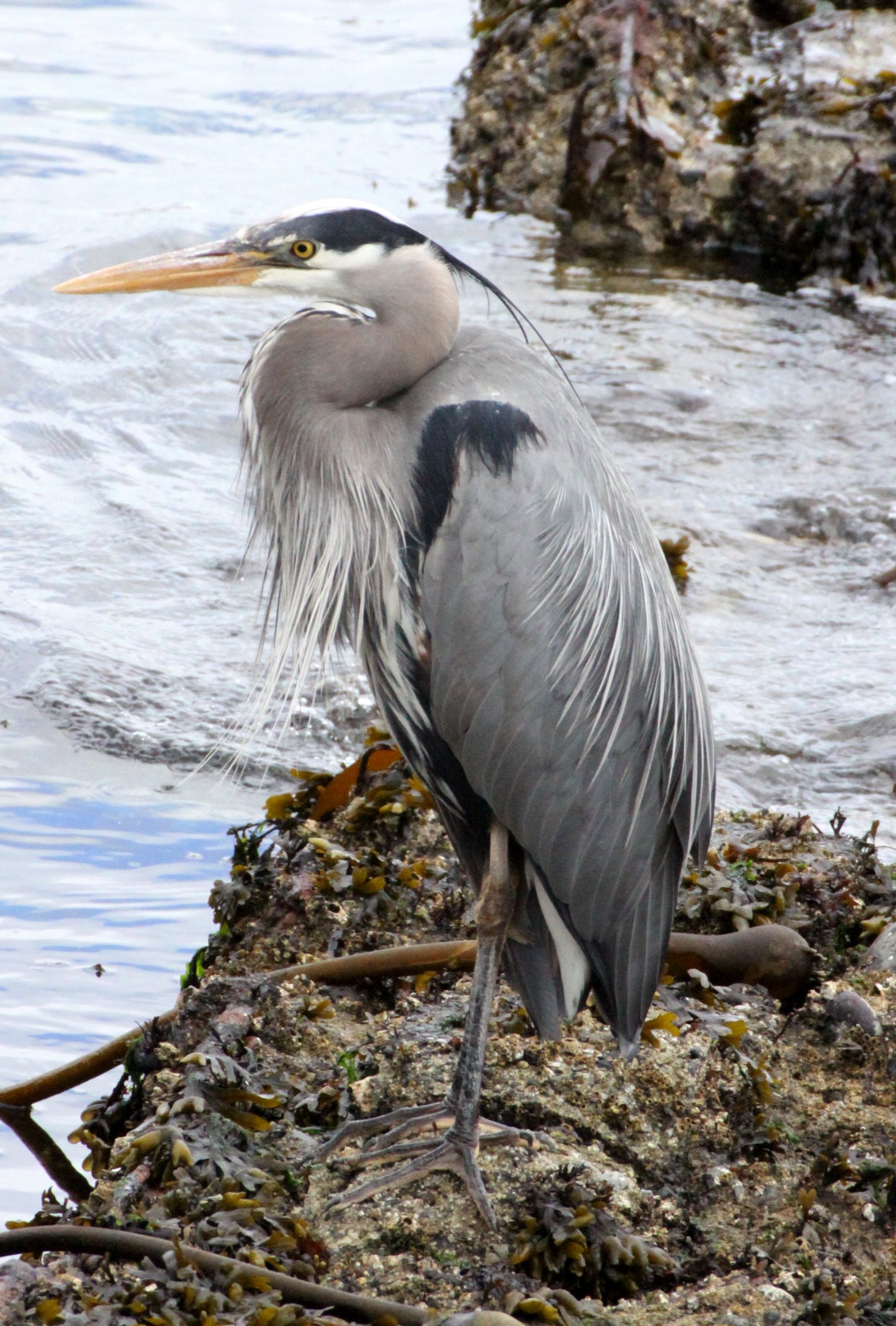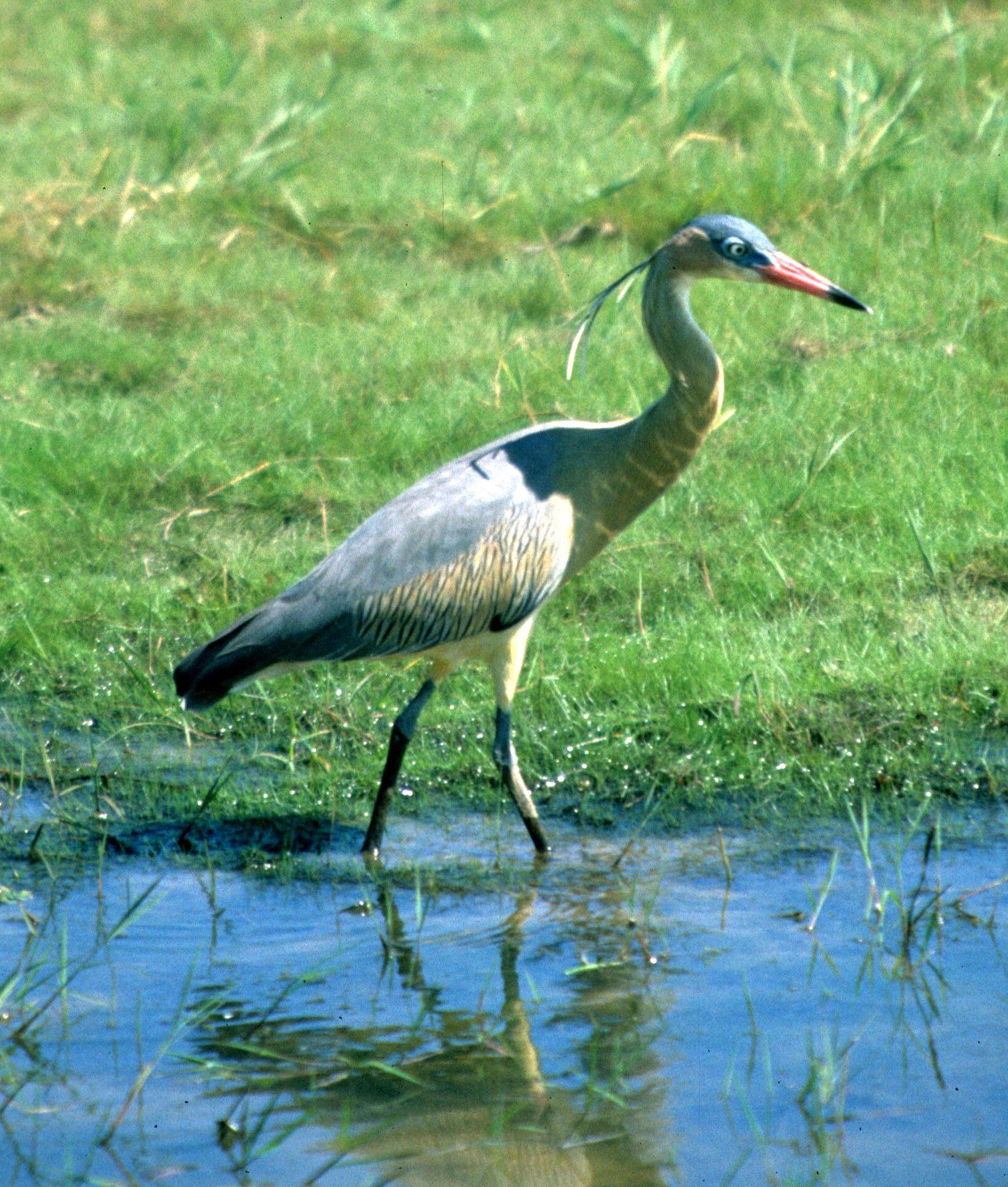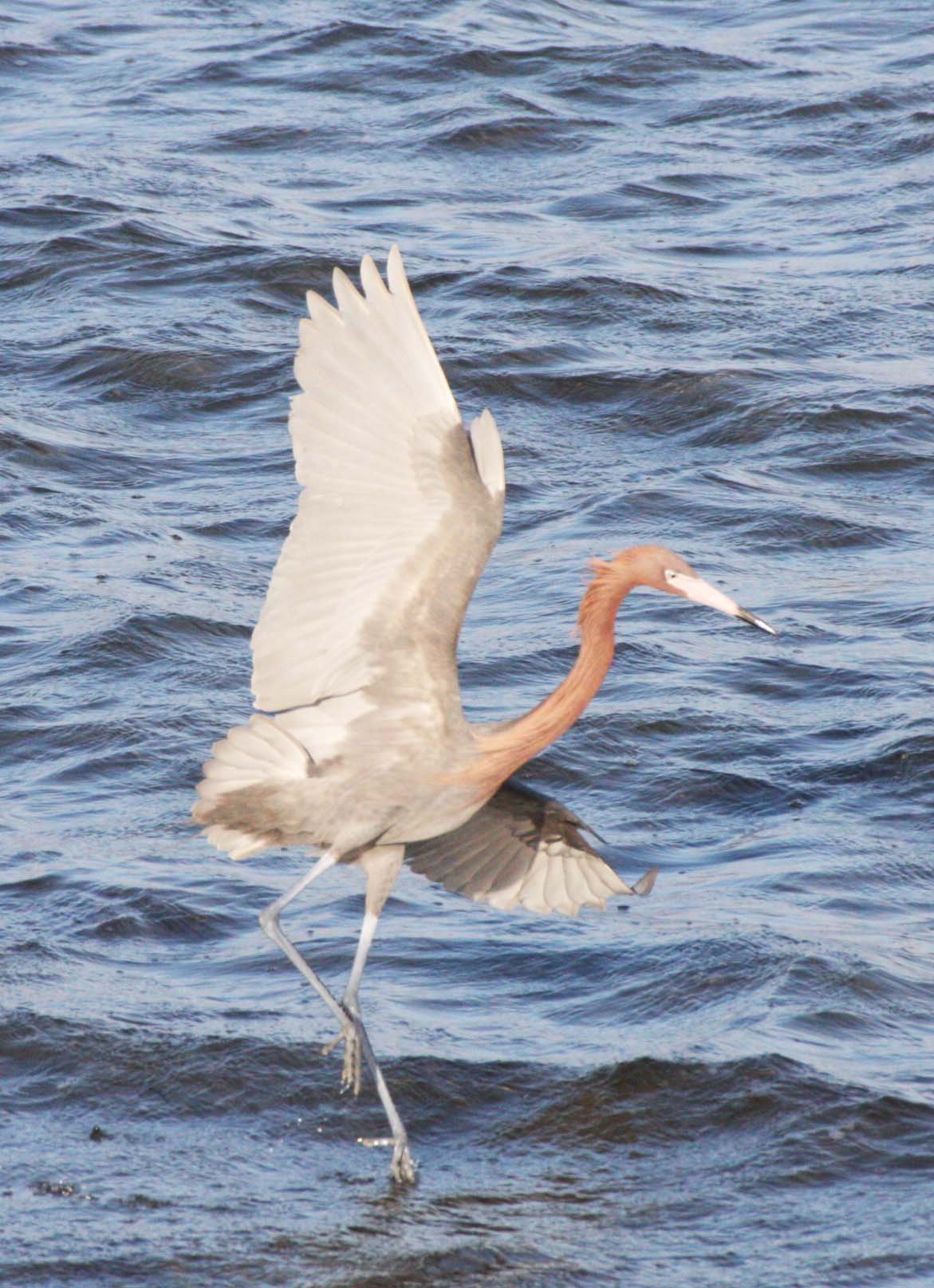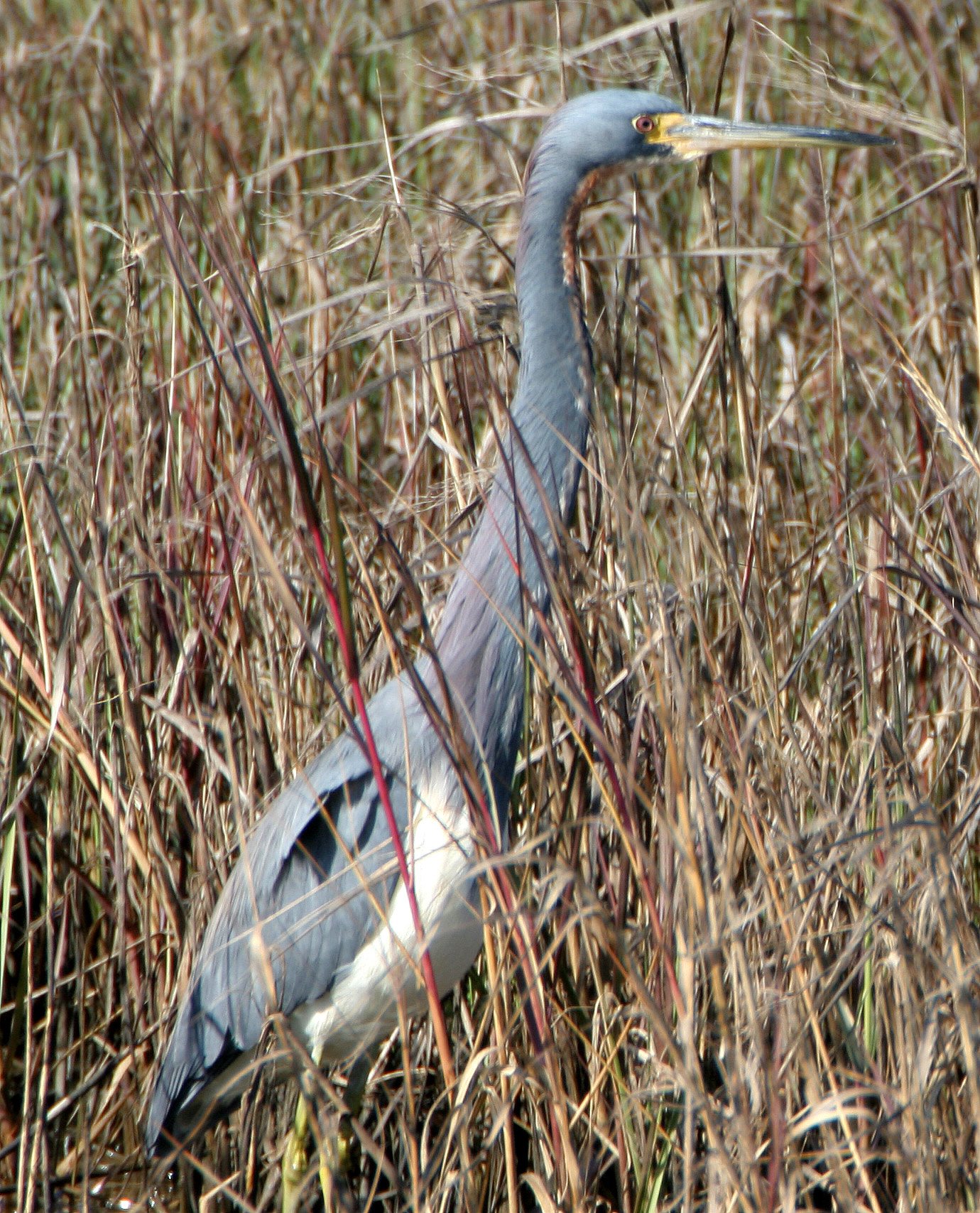

The herons are long-legged, long-necked, freshwater and coastal birds in the family Ardeidae, with 72 recognised species, some of which are referred to as egrets or bitterns rather than herons. Members of the genera Botaurus and Ixobrychus are referred to as bitterns, and, together with the zigzag heron, or zigzag bittern, in the monotypic genus Zebrilus, form a monophyletic group within the Ardeidae. Egrets do not form a biologically distinct group from herons, and tend to be named differently because they are mainly white or have decorative plumes in breeding plumage. Herons, by evolutionary adaptation, have long beaks.
Since an early age, Great Blue Herons were always the birds that caught my eye and interest
The classification of the individual heron/egret species is fraught with difficulty, and no clear consensus exists about the correct placement of many species into either of the two major genera, Ardea and Egretta. Similarly, the relationships of the genera in the family are not completely resolved. However, one species formerly considered to constitute a separate monotypic family, the Cochlearidae or the boat-billed heron, is now regarded as a member of the Ardeidae.
Although herons resemble birds in some other families, such as the storks, ibises, spoonbills, and cranes, they differ from these in flying with their necks retracted, not outstretched. They are also one of the bird groups that have powder down. Some members of this group nest colonially in trees, while others, notably the bitterns, use reed beds. A group of them is called a "siege."
The herons are medium- to large-sized birds with long legs and necks. They exhibit very little sexual dimorphism in size. The smallest species is usually considered the dwarf bittern, which measures 25–30 cm (10–12 in) in length, although all the species in the genus Ixobrychus are small and many broadly overlap in size. The largest species of heron is the goliath heron, which stands up to 152 cm (60 in) tall. The necks are able to kink in an S-shape, due to the modified shape of the cervical vertebrae, of which they have 20–21. The neck can retract and extend and is retracted during flight, unlike most other long-necked birds. The neck is longer in the day herons than the night herons and bitterns. The legs are long and strong and in almost every species are unfeathered from the lower part of the tibia (the exception is the zigzag heron). In flight, the legs and feet are held backwards. The feet of herons have long, thin toes, with three forward pointing ones and one pointing backwards.
The bill is generally long and harpoon-like. It can vary from extremely fine, as in the agami heron, to thick as in the grey heron. The most atypical bill is owned by the boat-billed heron, which has a broad, thick bill. The bill and other bare parts of the body are usually yellow, black, or brown in colour, although this can vary during the breeding season. The wings are broad and long, exhibiting 10 or 11 primary feathers (the boat-billed heron has only nine), 15–20 secondaries, and 12 rectrices (10 in the bitterns). The feathers of the herons are soft and the plumage is usually blue, black, brown, grey, or white, and can often be strikingly complex. Amongst the day herons, little sexual dimorphism in plumage is seen (except in the pond-herons); differences between the sexes are the rule for the night herons and smaller bitterns. Many species also have different colour morphs. In the Pacific reef heron, both dark and light colour morphs exist, and the percentage of each morph varies geographically. White morphs only occur in areas with coral beaches.
Black Bittern is probably my fave Ardeid species
The herons are a widespread family with a cosmopolitan distribution. They exist on all continents except Antarctica and are present in most habitats except the coldest extremes of the Arctic, extremely high mountains, and the driest deserts. Almost all species are associated with water; they are essentially non-swimming waterbirds that feed on the margins of lakes, rivers, swamps, ponds, and the sea. They are predominantly found in lowland areas, although some species live in alpine areas, and the majority of species occur in the tropics.
The herons are a highly mobile family, with most species being at least partially migratory; for example, the grey heron is mostly sedentary in Britain, but mostly migratory in Scandinavia. Birds are particularly inclined to disperse widely after breeding, but before the annual migration, where the species is colonial, searching out new feeding areas and reducing the pressures on feeding grounds near the colony. The migration typically occurs at night, usually as individuals or in small groups.
The herons and bitterns are carnivorous. The members of this family are mostly associated with wetlands and water and feed on a variety of live aquatic prey. Their diet includes a wide variety of aquatic animals, including fish, reptiles, amphibians, crustaceans, molluscs, and aquatic insects. Individual species may be generalists or specialize in certain prey types, such as the yellow-crowned night heron, which specializes in crustaceans, particularly crabs. Many species also opportunistically take larger prey, including birds and bird eggs, rodents, and more rarely carrion. Even more rarely, herons eating acorns, peas, and grains have been reported, but most vegetable matter consumed is accidental.
The most common hunting technique is for the bird to sit motionless on the edge of or standing in shallow water and to wait until prey comes within range. Birds may either do this from an upright posture, giving them a wider field of view for seeing prey or from a crouched position, which is more cryptic and means the bill is closer to the prey when it is located. Having seen prey, the head is moved from side to side, so that the heron can calculate the position of the prey in the water and compensate for refraction, and then the bill is used to spear the prey.
In addition to sitting and waiting, herons may feed more actively. They may walk slowly, around or less than 60 paces a minute, snatching prey when it is observed. Other active feeding behaviours include foot stirring and probing, where the feet are used to flush out hidden prey. The wings may be used to frighten prey (or possibly attract it to shade) or to reduce glare; the most extreme example of this is exhibited by the black heron, which forms a full canopy with its wings over its body.
Purple Heron in Thale Noi, Patthalum Thailand enjoying the breeze
Some species of heron, such as the little egret and grey heron, have been documented using bait to lure prey to within striking distance. Herons may use items already in place, or actively add items to the water to attract fish such as the banded killifish. Items used may be man-made, such as bread; alternatively, striated herons in the Amazon have been watched repeatedly dropping seeds, insects, flowers, and leaves into the water to catch fish.
Three species, the black-headed heron, whistling heron, and especially the cattle egret, are less tied to watery environments and may feed far away from water. Cattle egrets improve their foraging success by following large grazing animals, catching insects flushed by their movement. One study found that the success rate of prey capture increased 3.6 times over solitary foraging.
Analyses of the skeleton, mainly the skull, suggested that the Ardeidae could be split into a diurnal and a crepuscular/nocturnal group which included the bitterns. From DNA studies and skeletal analyses focusing more on bones of body and limbs, this grouping has been revealed as incorrect.[18] Rather, the similarities in skull morphology reflect convergent evolution to cope with the different challenges of daytime and nighttime feeding. Today, it is believed that three major groups can be distinguished, which are:
tiger herons and the boatbill
bitterns
day herons and egrets, and night herons
The night herons could warrant separation as subfamily Nycticoracinae, as it was traditionally done. However, the position of some genera (e.g. Butorides or Syrigma) is unclear at the moment, and molecular studies have until now suffered from a small number of studied taxa. Especially, the relationships among the subfamily Ardeinae are very badly resolved. The arrangement presented here should be considered provisional.
A 2008 study suggests that this family belongs to the Pelecaniformes. In response to these findings, the International Ornithological Congress reclassified Ardeidae and their sister taxa Threskiornithidae under the order Pelecaniformes instead of the previous order of Ciconiiformes.

Rufescent Tiger Heron (Tigrisoma lineatum) Pantanal Brazil
Cinnamon Bittern (Ixobrychus cinnamomeus) Thailand
Yellow Bittern (Ixobrychus sinensis) Thailand
Black Bittern (Ixobrychus flavicollis) Thailand & Sri Lanka
Eurasian or Great Bittern (Botaurus stellaris) China
Nankeen Night Heron (Nycticorax caledonicus) Australia
Black-crowned Night Heron (Nycticorax nycticorax) Worldwide locations
Yellow-crowned Night Heron (Nyctanassa violacea) Galapagos Islands
Malaysian Night Heron (Gorsachius melanolophus) Thailand

Green Heron (Butorides virescens) USA
Lava Heron (Butorides sundevalli) Galapagos
Striated Heron (Butorides striatus) Worldwide locations
Capped Heron (Pilherodius pileatus) Manu, Peru
Indian Pond Heron (Ardeola grayii) India, Sri Lanka
Javan Pond Heron (Ardeola speciosa) Thailand
Chinese Pond Heron (Ardeola bacchus) Thailand
Squacco Heron (Ardeola ralloides) Eastern and Southern Africa
Madagascar Squacco Heron (Ardeola idae) Madagascar
Boat-billed Heron (Cochlearius cochlearius) Brazil

Rufous-bellied Heron (Ardeola rufiventris) Botswana
Eastern Cattle Egret (Bubulcus coromandus) East and Southeast Asia
Western Cattle Egret (Bubulcus ibis) Costa Rica
Grey Heron (Ardea cinerea) Europe, Asia
Great Blue Heron (Ardea herodias) USA
Cocoi Heron (Ardea cocoi) Pantanal Brazil
Purple Heron (Ardea purpurea) Thailand
Goliath Heron (Ardea goliath) Southern Africa
Black-headed Heron (Ardea melanocephala) Eastern & Southern Africa

Great-billed Heron (Ardea sumatrana) Australia
Eastern Great Egret (Ardea (alba) modesta) East and Southeast Asia
American Great Egret (Ardea alba egretta) North America
Whistling Heron (Syrigma sibilatrix) Pantanal Brazil
Pied Heron (Egretta picata) Kakadu Australia
Reddish Egret (Egretta rufescens) Baja California, Mexico
Snowy Egret (Egretta thula) Western USA
Black Egret (Egretta ardesiaca) Ethiopia
Slaty Egret (Egretta vinaceigula) Eastern & Southern Africa

Tricolored Heron (Egretta tricolor) Texas
Little Blue Heron (Egretta caerulea) Western North America
Little Egret (Egretta garzetta) Asia
Western or Indian Reef Heron (Egretta gularis) Gujarat, India
Pacific Reef Heron (Egretta sacra) Southeast Asia
Chinese Egret (Egretta eulophotes) Thailand
White-necked Heron (Ardea pacifica) Kakadu NP - Northern Territory
White-faced Heron (Egretta novaehollandiae) Australia
Intermediate Egret (Mesophoyx intermedia) Southeast Asia
Plumed Egret (Ardea plumifera) Kakadu Northern Territory



















